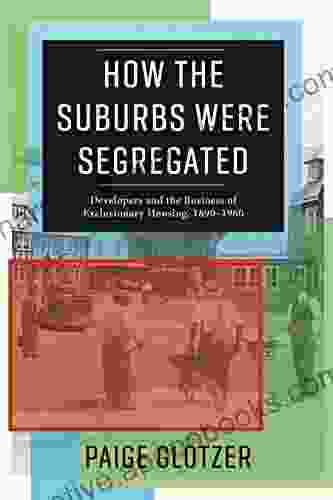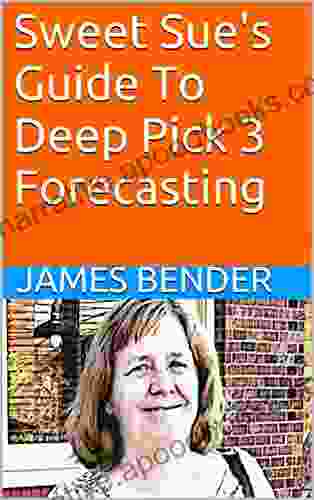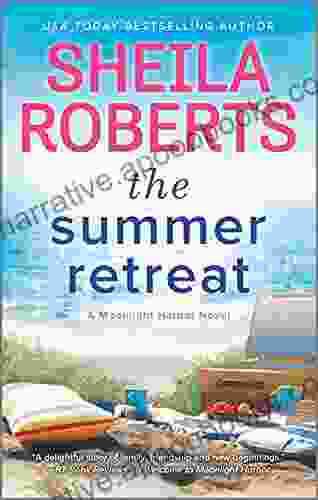Unveiling the Hidden History: How The Suburbs Were Segregated

The suburbs often conjure images of idyllic neighborhoods, single-family homes, and manicured lawns. However, beneath this picturesque façade lies a complex and often overlooked history of segregation. In "How The Suburbs Were Segregated," author and historian Kevin Kruse delves into the systemic policies and practices that shaped the racial makeup of suburban America.
Antecedents of Segregation
Kruse traces the roots of suburban segregation to the early 20th century. Urban renewal projects and restrictive zoning laws in cities created pressure on African Americans to leave city centers and relocate to less desirable areas. Restrictive covenants, agreements between homeowners not to sell or rent to certain groups, further barred minorities from accessing housing in white neighborhoods.
4.6 out of 5
| Language | : | English |
| File size | : | 31864 KB |
| Text-to-Speech | : | Enabled |
| Screen Reader | : | Supported |
| Enhanced typesetting | : | Enabled |
| Word Wise | : | Enabled |
| Print length | : | 316 pages |
Redlining: The Foundation of Segregation
Kruse argues that the federal government played a crucial role in suburban segregation through its redlining policies. The Home Owners' Loan Corporation (HOLC) created color-coded maps that graded neighborhoods based on their racial composition and economic stability. Redlined areas, typically those with large minority populations, were deemed "high risk" for investment and denied access to mortgages. This practice effectively walled off communities of color from suburban opportunities.
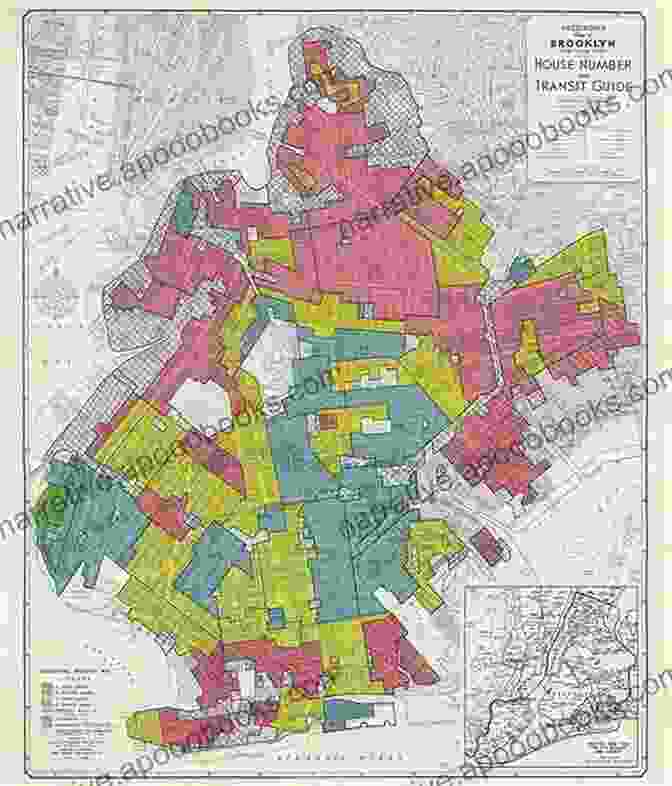
White Flight and the Rise of Suburbs
After World War II, many white families left cities for the suburbs in a phenomenon known as "white flight." Fueled by fears of integration and racial unrest, white homeowners moved to new subdivisions financed by federally insured mortgages. Developers and real estate agents actively marketed these communities as exclusively white.
The Role of Government
Kruse examines the complicity of government agencies in perpetuating suburban segregation. The Federal Housing Administration (FHA) insured mortgages for homes in white-only suburbs, while the Veterans Administration (VA) provided loans to veterans for homes in segregated neighborhoods. These policies incentivized segregation and limited the ability of minorities to access housing in predominantly white areas.
Resisting Segregation
Despite the systemic barriers, African Americans and other marginalized groups fought against suburban segregation. The National Association for the Advancement of Colored People (NAACP) and other civil rights organizations challenged restrictive covenants in court and organized protests against discriminatory practices. In 1968, the Fair Housing Act outlawed discrimination in housing based on race, color, religion, sex, or national origin.
Legacy and Impact
Kruse concludes by examining the enduring legacy of suburban segregation. While fair housing laws have made significant progress in dismantling legal barriers, residential segregation remains a persistent issue in the United States. Segregated suburbs often have lower-quality schools, higher crime rates, and limited access to economic opportunities, perpetuating a cycle of inequality.
"How The Suburbs Were Segregated" is a groundbreaking work that sheds light on the hidden history of racial segregation in suburban America. Kruse meticulously documents the policies and practices that created and maintained segregated communities. By understanding this history, we can better address the ongoing challenges of racial inequality and work towards creating a more inclusive and equitable society.
4.6 out of 5
| Language | : | English |
| File size | : | 31864 KB |
| Text-to-Speech | : | Enabled |
| Screen Reader | : | Supported |
| Enhanced typesetting | : | Enabled |
| Word Wise | : | Enabled |
| Print length | : | 316 pages |
Do you want to contribute by writing guest posts on this blog?
Please contact us and send us a resume of previous articles that you have written.
 Book
Book Novel
Novel Page
Page Chapter
Chapter Text
Text Story
Story Genre
Genre Reader
Reader Library
Library Paperback
Paperback E-book
E-book Magazine
Magazine Newspaper
Newspaper Paragraph
Paragraph Sentence
Sentence Bookmark
Bookmark Shelf
Shelf Glossary
Glossary Bibliography
Bibliography Foreword
Foreword Preface
Preface Synopsis
Synopsis Annotation
Annotation Footnote
Footnote Manuscript
Manuscript Scroll
Scroll Codex
Codex Tome
Tome Bestseller
Bestseller Classics
Classics Library card
Library card Narrative
Narrative Biography
Biography Autobiography
Autobiography Memoir
Memoir Reference
Reference Encyclopedia
Encyclopedia Colin Fyfe
Colin Fyfe Valentina Tsoneva
Valentina Tsoneva Paige Tyler
Paige Tyler James Risen
James Risen Allen O Donoghue
Allen O Donoghue Deborah Hopkinson
Deborah Hopkinson Alyson Reid Larade
Alyson Reid Larade Robert L Sheridan
Robert L Sheridan Samuel Frederick
Samuel Frederick Alisa Hatchenson
Alisa Hatchenson Lisa D Delpit
Lisa D Delpit Mary Taylor Young
Mary Taylor Young Tracy Rees
Tracy Rees Michelle Obama
Michelle Obama John Q Public
John Q Public Phillip Y Lipscy
Phillip Y Lipscy Matt Morris
Matt Morris Katherine Hopkins
Katherine Hopkins Annie Darling
Annie Darling Houston Kraft
Houston Kraft
Light bulbAdvertise smarter! Our strategic ad space ensures maximum exposure. Reserve your spot today!
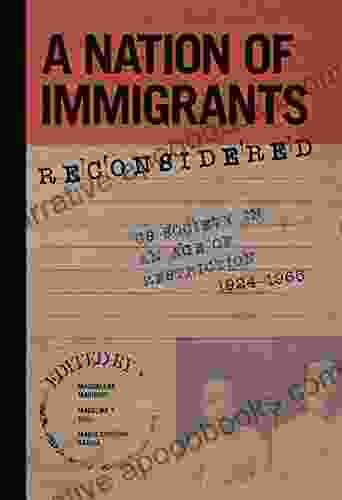
 Ken SimmonsNation of Immigrants Reconsidered: Uncovering the Hidden Truths of America's...
Ken SimmonsNation of Immigrants Reconsidered: Uncovering the Hidden Truths of America's... Caleb CarterFollow ·12.7k
Caleb CarterFollow ·12.7k Adam HayesFollow ·10.6k
Adam HayesFollow ·10.6k Cameron ReedFollow ·11.1k
Cameron ReedFollow ·11.1k Kevin TurnerFollow ·18.6k
Kevin TurnerFollow ·18.6k Douglas AdamsFollow ·4.4k
Douglas AdamsFollow ·4.4k Spencer PowellFollow ·9k
Spencer PowellFollow ·9k Jermaine PowellFollow ·6.6k
Jermaine PowellFollow ·6.6k Jett PowellFollow ·6k
Jett PowellFollow ·6k
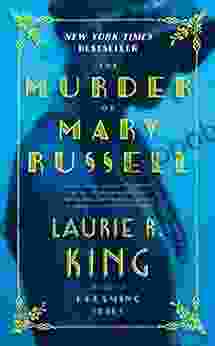
 F. Scott Fitzgerald
F. Scott FitzgeraldUnravel the Enigmatic Murder of Mary Russell: A...
Prologue: A Grisly Discovery In the...

 Connor Mitchell
Connor MitchellLittle Quilts: Gifts from Jelly Roll Scraps
Embrace the Art...
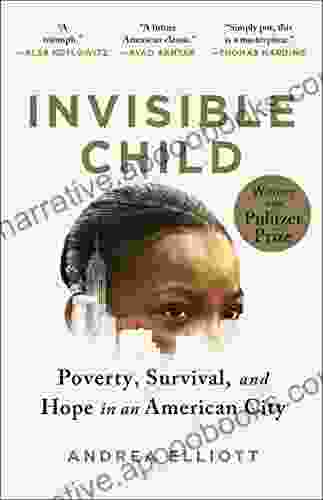
 Harold Powell
Harold PowellPoverty Survival Hope In An American City: A Pulitzer...
A testament to the resilience of the human...

 Ray Blair
Ray BlairConfronting Global Warming: Population, Resources, and...
Global warming is one of the most pressing...

 Gary Cox
Gary CoxStyle Your Most Authentic Self and Cultivate a Mindful...
Unlock Your True...
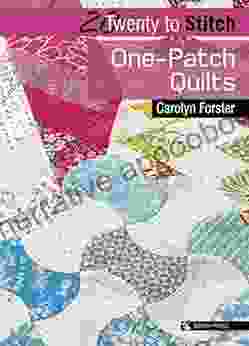
 Caleb Long
Caleb LongEmbark on a Colorful Patchwork Adventure: Discover 20 To...
Step into the captivating world of...
4.6 out of 5
| Language | : | English |
| File size | : | 31864 KB |
| Text-to-Speech | : | Enabled |
| Screen Reader | : | Supported |
| Enhanced typesetting | : | Enabled |
| Word Wise | : | Enabled |
| Print length | : | 316 pages |


